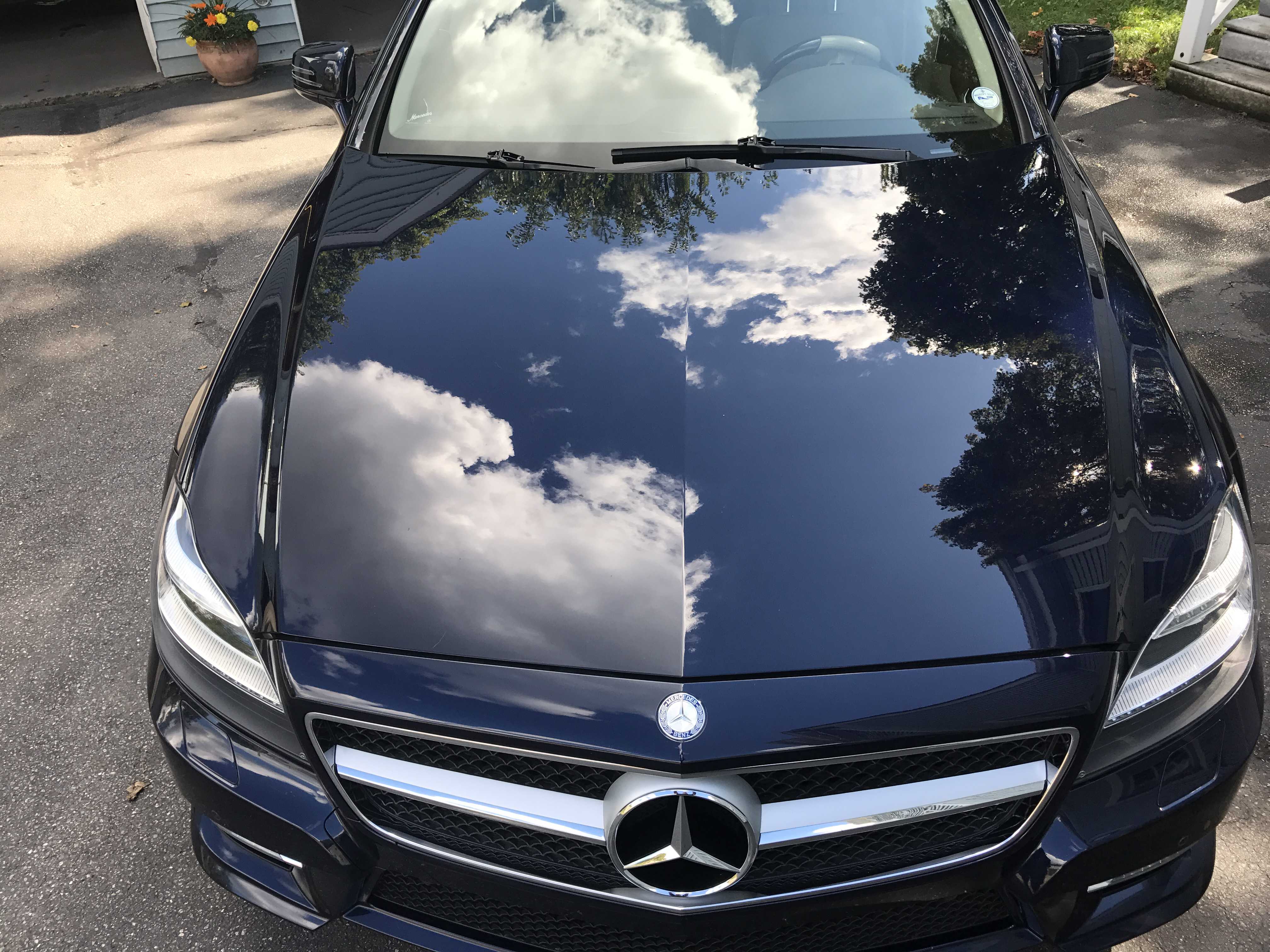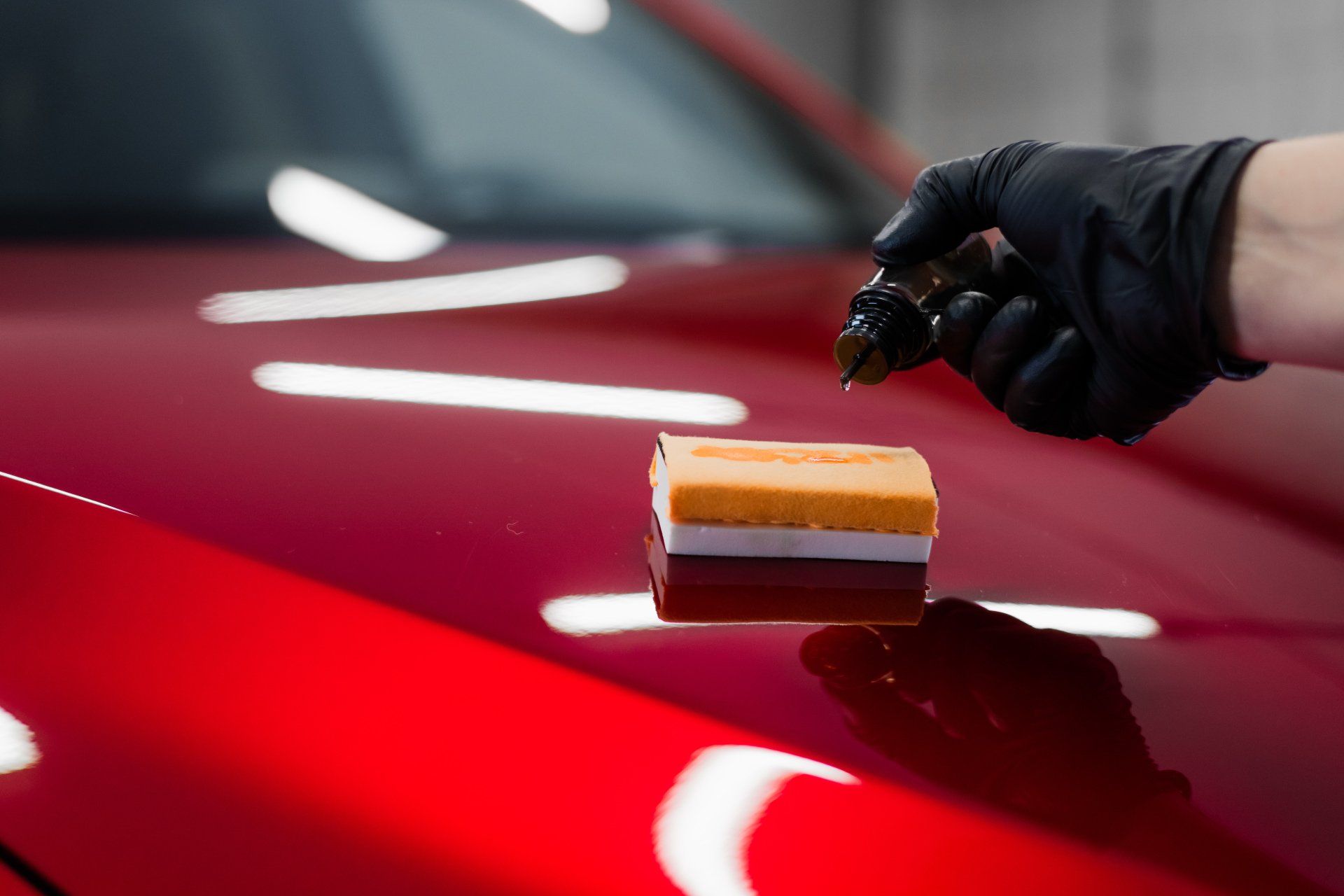How to maximize Ceramic Coating Newark for durable paint protection
Wiki Article
Discovering the Science Behind Car Ceramic Coating and Its Safety Characteristics
The science of car ceramic coating offers an interesting research in advanced automotive protection. Made up largely of silicon dioxide and polymers, these finishes create a robust bond with vehicle paint. This interaction improves longevity against ecological hazards while providing hydrophobic benefits. The details of just how these finishings work and their long-term advantages continue to be less understood. Ceramic Coating Newark. Unboxing these information exposes why ceramic layers are becoming a recommended option for vehicle careWhat Is Ceramic Coating?
Ceramic coating is a fluid polymer that chemically bonds to the surface area of a vehicle's paint. This sophisticated safety layer improves resilience and uses remarkable resistance to ecological variables. Unlike typical wax or sealers, which give short-lived security, ceramic coverings produce a long-lasting guard that can hold up against severe problems such as UV rays, acidic pollutants, and severe weather. When used correctly, the coating develops a hydrophobic surface area, causing water to grain and slide off, which aids in keeping the car's sanitation. Additionally, it uses improved gloss and depth to the paint, making the car show up more refined and dynamic. The application procedure normally involves thorough surface prep work, consisting of cleansing and polishing, to guarantee peak bonding. Therefore, ceramic finishings are ending up being progressively prominent amongst car enthusiasts and those looking for to secure their financial investments, promising to preserve the vehicle's visual allure while minimizing the regularity of upkeep.The Structure of Ceramic Coatings
The intricate solution of ceramic layers largely includes silicon dioxide (SiO2), which is acquired from all-natural resources like quartz and sand. This key component offers the foundation for the coating's longevity and protective qualities. In enhancement to SiO2, ceramic finishings often include numerous polymers and ingredients that boost adhesion, adaptability, and resistance to ecological aspects. These substances work synergistically to produce a robust obstacle against pollutants such as dust, chemicals, and UV rays.Furthermore, some formulations incorporate titanium dioxide (TiO2) or other nanomaterials, which can increase the coating's hydrophobic buildings, resulting in enhanced water repellency. The precise composition can vary substantially amongst suppliers, influencing efficiency and long life. Inevitably, the mix of these components finishes in a protective layer that not only improves the aesthetic appeal of cars but also serves to prolong their life-span by protecting the surface from prospective damages.How Ceramic Coatings Work
Recognizing exactly how ceramic coverings work involves discovering their chemical make-up, which adds to their protective high qualities. The application process is essential for attaining optimal results, while durability and durability variables determine the coating's effectiveness over time. With each other, these aspects highlight the advantages and efficiency of ceramic coatings for automobile security.Chemical Make-up Explained
While lots of car proprietors look for lasting defense for their lorries, the chemical make-up of ceramic finishes plays an important function in their efficiency. These layers mostly include silicon dioxide (SiO2), which is stemmed from all-natural minerals. This compound develops a strong bond with the lorry's paint, producing a resilient, safety layer. In addition, many ceramic layers consist of titanium dioxide (TiO2), boosting their hydrophobic residential or commercial properties and resistance to UV rays. The visibility of polysiloxanes can even more boost versatility and durability. Together, these components contribute to the coating's capacity to fend off water, dust, and contaminants, while likewise providing a high-gloss coating. Understanding this chemical foundation aids car owners appreciate the durable protection provided by ceramic coverings.Application Refine Introduction
Applying ceramic finishes includes a thorough process that assures suitable bonding and defense for the car's surface area. Extensive cleaning and purification of the car's outside are executed to remove dirt, grime, and previous waxes. This step validates that the surface area is without impurities that could hinder adhesion. Following this, the paint is usually polished to boost clearness and remove any kind of flaws. Once prepared, the ceramic coating is applied in little sections utilizing an applicator pad, permitting consistent protection. The coating is then left to cure, forming a strong chemical bond with the surface area. Proper healing times why not try here and conditions are critical, as they confirm the coating achieves its optimum performance and safety high qualities.Durability and Resilience Elements
Ceramic finishings are developed to offer long-lasting protection via their innovative chemical make-up, which produces a durable barrier against ecological contaminants. The sturdiness of these finishings is influenced by variables such as the thickness of the application, the quality of the item, and the conditions under which the car is exposed. Premium ceramic layers can last several years, standing up to scratches, UV rays, and chemical discolorations. Appropriate maintenance, including regular cleaning and regular reapplication, can additionally boost long life. Furthermore, environmental elements like environment and direct exposure to contaminants can influence the life expectancy of the coating. Overall, when used and kept properly, ceramic coverings supply remarkable toughness, making them a popular option for car fanatics seeking to maintain their automobile's appearance.Hydrophobic Properties and Water Repellency
Hydrophobic homes are a hallmark of high quality car ceramic coatings, significantly boosting the vehicle's surface efficiency. These coatings produce a molecular bond with the car's paint, leading to a surface that repels water efficiently. When water comes right into contact with a ceramic-coated surface area, it grains up and rolls off, minimizing the amount of liquid that stays on the paint. This actions not just adds to an aesthetically pleasing appearance however likewise minimizes the buildup of impurities such as dust, crud, and road salts.The enhanced water repellency leads to easier cleaning and maintenance, as much less effort is required to get rid of undesirable substances. Additionally, the hydrophobic nature of ceramic coatings helps in avoiding water areas, which can mar the surface of uncoated surfaces. In general, the unification of hydrophobic buildings in ceramic finishings plays a crucial function in keeping the car's pristine look while streamlining upkeep.Protection Versus Scratches and UV Damage
Car ceramic coverings supply considerable defense against scrapes and UV damage. The scrape resistance system produces a resilient layer that absorbs impacts, while the UV protecting advantages assist keep the car's linked here paint honesty in time. With each other, these features add to a longer-lasting and aesthetically appealing coating.Damage Resistance Device
Making use of advanced innovation, ceramic layers supply a robust guard versus scrapes and UV damage, boosting the durability and look of car surface areas. The scrape resistance mechanism of these layers is associated to their distinct molecular framework, which forms a long lasting bond with the vehicle's paint. This bond produces a hard, protective layer that can soak up effects and resist abrasions. Furthermore, the smooth surface area of the coating reduces rubbing, making it difficult for impurities to adhere and trigger scrapes. The chemical composition of ceramic layers often includes nanoparticles that strengthen the protective layer, additional enhancing its durability. Consequently, cars treated with ceramic coatings display considerably boosted scrape resistance compared to standard wax or sealers, making certain a beautiful coating over time.UV Protecting Perks
The safety qualities of ceramic coverings prolong past scrape resistance to consist of substantial UV protecting advantages. These finishes develop a robust obstacle that reflects unsafe ultraviolet rays, safeguarding the lorry's paint and underlying products. Prolonged exposure to UV radiation can lead to fading, oxidation, and deterioration of the paint finish. By including ceramic finishes, automobile proprietors can properly minimize these dangers, preserving the visual charm and integrity of their cars. Furthermore, the UV blocking residential properties add to enhanced long life, decreasing the frequency of repainting and upkeep. Eventually, the integration of ceramic finishings uses an extensive solution for protecting vehicles from the harmful effects of sunlight exposure, making sure a sustained, lively appearance gradually.The Longevity and Upkeep of Ceramic Coatings

Frequently Asked Questions
Can Ceramic Coating Be Applied to Any Kind of Automobile?
Ceramic coating can be related to numerous kinds of vehicles, consisting of automobiles, vehicles, and motorcycles. Surface area prep work and compatibility with specific products are important for excellent attachment and effectiveness of the coating.Just How Much Does Ceramic Coating Commonly Cost?
Ceramic coating generally costs in between $500 and $2,000, relying on variables such as automobile size, coating quality, and specialist application. The investment can give resilient defense and boost the lorry's appearance over time.
Is Professional Application Necessary for Best Results?
The requirement of specialist application usually depends on preferred results. Experts usually assure correct surface area preparation and application strategies, he has a good point leading to suitable bonding and long life of the coating, which might be challenging for unskilled individuals to attain.Can Ceramic Coatings Be Eliminated or Fixed?
Ceramic finishes can be eliminated or repaired, though the process might call for certain solvents or strategies - Ceramic Coating Newark. Proper elimination is necessary to prevent damages to the underlying surface, highlighting the importance of professional support for excellent outcomesHow Does Porcelain Coating Contrast to Traditional Wax?
The contrast in between ceramic coating and typical wax discloses that ceramic layers provide premium toughness, enhanced security versus environmental contaminants, and longer-lasting sparkle, while wax requires much more constant application and offers much less general resistance to damages.Report this wiki page